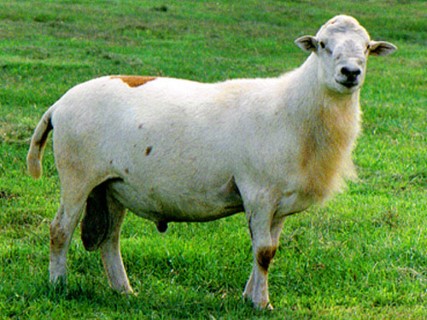 |
| Source: Katahdin Hair Sheep International |
The Katahdin sheep breed has an intriguing and unique history, originating from the innovative breeding efforts of Michael Piel in Maine during the late 1950s. Piel, recognizing the potential benefits of eliminating wool as a major factor for selection, embarked on a mission to combine the desirable traits of Caribbean hair sheep, such as their hair coat, prolificacy, and hardiness, with the meat conformation and growth rate of wool breeds.
Piel's extensive breeding program involved crossing the hair sheep with various British breeds, particularly the Suffolk, over nearly two decades. Through careful selection and breeding, Piel eventually developed a flock of ewes that embodied the desired combination of traits. These ewes, named Katahdins after Maine's Mt. Katahdin, formed the foundation of the Katahdin sheep breed.
In the mid-1970s, the Wiltshire Horn, a shedding breed from England, was introduced into the Katahdin flock to further enhance size and improve carcass quality. From this original flock, new breeders across North America and beyond have expanded the population of Katahdin sheep, meticulously selecting for hair coat, carcass quality, and reproductive efficiency.
To facilitate the growth and development of the breed, Katahdin Hair Sheep International (KHSI) was established in 1986 as a breeders organization. KHSI's mission includes registering individual Katahdins, promoting and marketing the breed, and encouraging research and development related to Katahdin sheep.
Katahdin sheep are eligible for registration with KHSI, and their conformity with the standard of type is inspected after one year of age. Breeders must be KHSI members to register sheep or request flock inspection. Provisions are in place for producers to follow an upgrading program to develop a purebred Katahdin flock by recording each cross with KHSI.
The Katahdin breed is known for its many desirable economic traits, which have been scientifically documented and tested through various experimental trials. Studies have shown that Katahdin sheep possess a significantly higher degree of parasite resistance and heat tolerance compared to wool sheep. Other ongoing research includes investigations into out-of-season breeding, prolificacy and fertility factors, carcass quality, meat flavor, and growth performance. These efforts contribute to the continued advancement and improvement of the Katahdin sheep breed.
